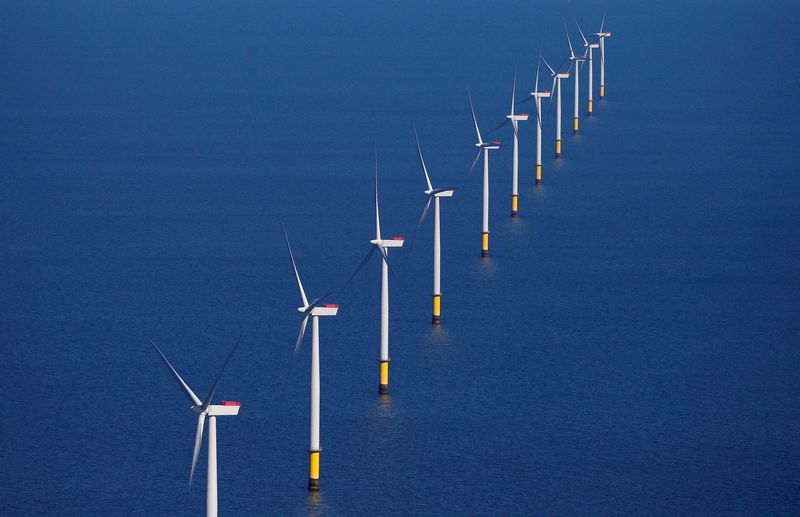OSLO (Reuters) - A new set of factors beyond bidding price is gaining traction in global tenders to award licences for offshore wind farms and will determine the winners and losers in a highly competitive industry, a new report by energy research firm Wood Mackenzie shows.
"The focus is now shifting to multiple criteria to determine tender and lease auction outcomes, and the criteria in individual markets will differ," Chris Seiple, vice chairman for Energy Transition at Wood Mackenzie said in a statement on Wednesday.
Cost competitiveness will always remain a central element of winning in offshore wind, but this has reached its limits as project returns are dropping amid the entry of new market players, rising lease payments and lower subsidy payments.
Instead, competitors will also have to consider local content, or the value a project can bring to a local, regional or national economy, as well as systems integration, ecological mitigation and sustainability in future bids, necessitating a strategic shift and greater cooperation, according to Wood Mackenzie's head of offshore wind research Soren Lassen.
"I think that it's the companies that are able to set up the right partnerships when bidding that will benefit the most, but I don't think it's one company that is going to be better than everyone else across all tenders and lease auctions," Lassen told Reuters.

There should be plenty of opportunities, with offshore wind poised to become one of the key technologies powering the decarbonisation of the global economy, Wood Mackenzie said.
By 2030, 24 countries will have large-scale offshore wind farms, up from nine at present, total installed capacity will rise to 330 gigawatt (GW) compared with 34 GW in 2020, and cumulative global capex spend in the offshore wind sector will hit $1 trillion by 2031, Wood Mackenzie forecast.